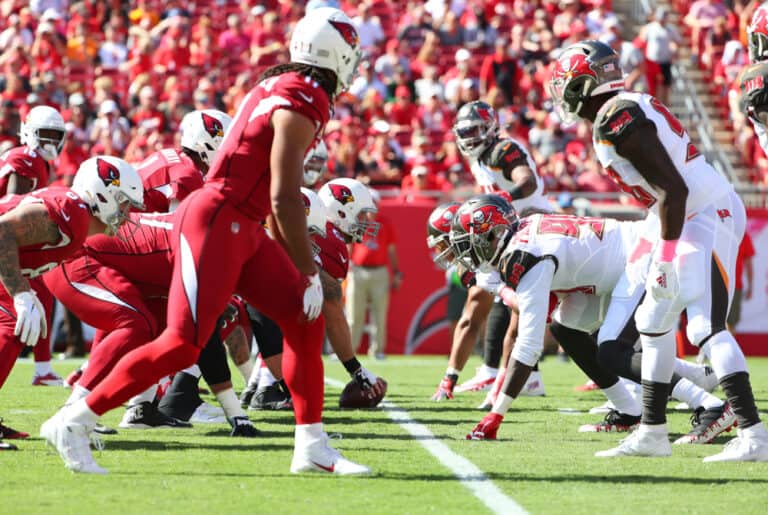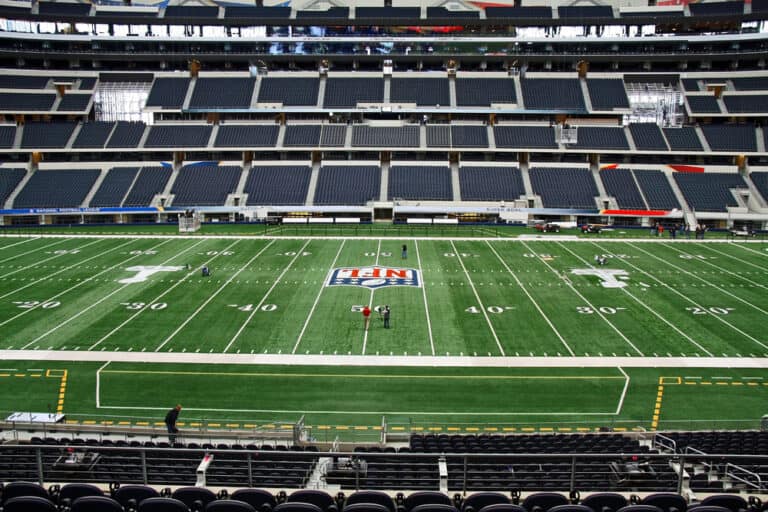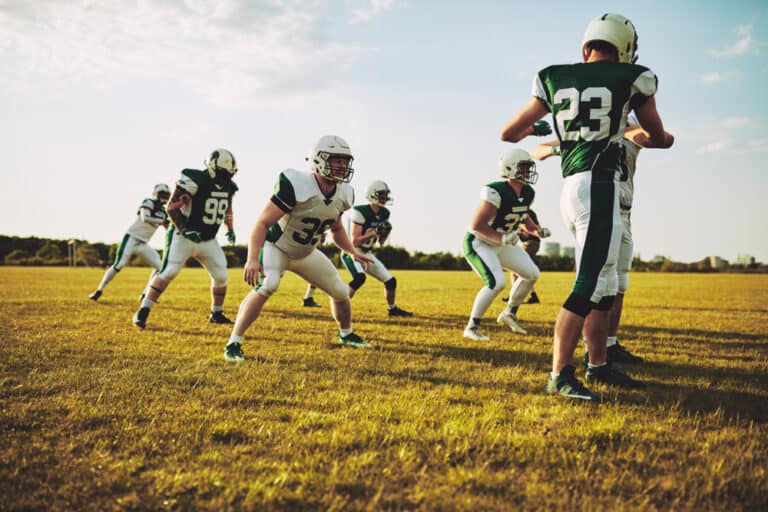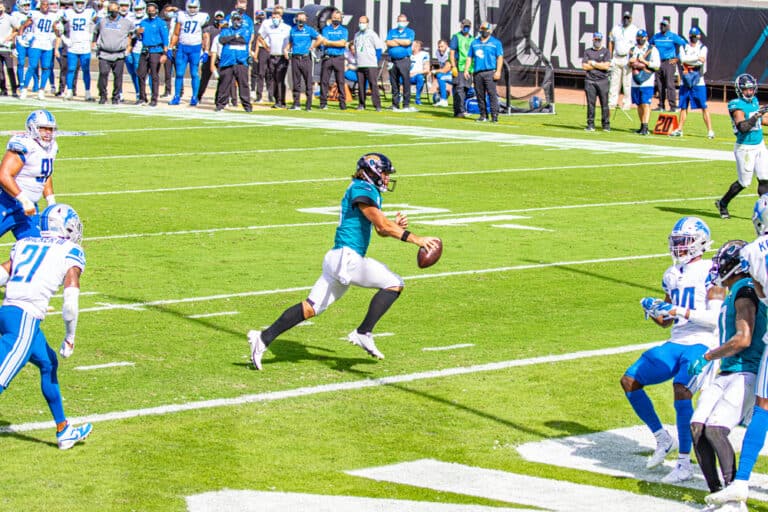What Side Of The Football Field Is The Home Team?
As a visitor to the United States of America from just about anywhere in the world, you may be forgiven for not having a clue as to what is going on, nor why, when you watch your first game of football (also called gridiron). Do the teams change sides during the game? How do I understand the complicated scoreboard? What side of the football field is the home team?
The home team does not remain on one side of the field for the duration of the game and spends time on both sides. However, the scoreboard will show the home team in the NFL as being the team on the right, or sometimes below, the away team. In college football, the home team is above or on the left.
Prior to the start of each football game, a coin toss determines which side of the field a team will start from and which team receives the ball first. The game starts with a kick-off where one team punts the ball downfield toward the other team, forcing them back as far as possible.
How Does The Coin Toss Affect Field-Side Choice?
This coin toss affects the sides of the field in the following way:
American football (or simply, ‘football’ in the US) comprises four quarters and offers teams the chance to change sides every quarter, but this does not always occur.
Before the start of the game, one team will toss a coin making the decision of which side they will play for the first quarter. The two teams are obliged to change sides for the second quarter but do not necessarily swap again for the third quarter.
To determine which side of the field the two teams will play in the third quarter, a second coin is tossed after halftime, and a new decision is made as to which team plays where for the third quarter. Teams could possibly return to the half of the field they occupied before the break or just as easily swap sides.
If a team occupies the South end of the field in both the second and third quarters, they have to move to the North end in the final quarter.
Do All Of The Stadia In The United States Run North To South?
Most football grounds run north to south, obviously to prevent sun in the eyes of the players, but it’s not a rule that they are obliged to do so. Indeed, the sun stays to the south for much of the year in most of the US, negating that argument somewhat.
The alignment of the indoor stadia is not affected by the sun, but seven of the 20 outdoor stadiums are either precisely north/south or very close to it. Ten of the 20 are built running from North-west to South-east.
What Are The Exceptions To The Stadia Layout Trend?
Three major exceptions to the stadia layout exist, with Cleveland Browns designing their beautiful FirstEnergy stadium near the harbor, running South-west to North-east. Jacksonville’s Bank Field is more North-north-east to South-south-west, and the Ravens’ home in Baltimore is West-north-west by East-south-east.
How Do The Scoreboards Show Home And Visitor Info?
Television Scoreboard
Watching an NFL (National Football League) game from the comfort of your own couch, you will have a fairly simple scoreboard presented since the full scoreboard from the stadium would block most of the action on the screen. It will usually show the visiting team’s logo, name, and score from the left, followed by the same for the home team. Next comes which quarter is being played and the amount of time left.
However, the home team in college football is listed first, and any visitors use the ‘away’ designation. Thus the scoreboard will read Home team vs. Away team. In a conference, if two colleges are tied for first place, the team with the higher ranking is designated the home team (as specified by college football rules.)
The Lone Star State can offer a great example for clarification of this point: If Texas met Texas A&M in College Station, Brazos County, Texas, and if Texas A&M had the higher ranking in the Aggies’ conference at the time, Texas A&M would be designated the home team for the game and have their name shown above or to the left of (depending on layout) of Texas.
Stadium Scoreboards
Scoreboards in stadia are far more detailed than those on your television screen for the reasons already covered. Because they are computerized, they can show plays, photographs of people, and much more. Delighted fans and players’ reactions are captured after every touchdown and displayed on the huge screens!
Adverts can be run on these boards, and quite often, they will show scores from other games in the same league for the benefit of both crowd and team management. During halftime in the Superbowl (the final game of the season between the winners of the two leagues), a show is provided by a top musical artist, and this is often shown on the scoreboard screen.
One notable exception was the Rihanna halftime show, where the stadium was in darkness, and the dancers were suspended in mid-air with the artist. Any light from a scoreboard in that scenario would have ruined the effect and been potentially dangerous.

Conclusion
Some confusion regarding where the home side plays in a game may come from looking at seating charts when choosing tickets. The tickets might say Home at the bottom of the ticket and Visitors or Guests at the top. This may be accompanied by a sketch of the field, but this is meaningless.
As discussed above, the teams have no idea before the game which team will occupy which half of the field but will, at some point, spend half of the game in each half of the field. This actually enhances the experience as you watch your defense and attack working from both sides, giving you more insight into your team.







